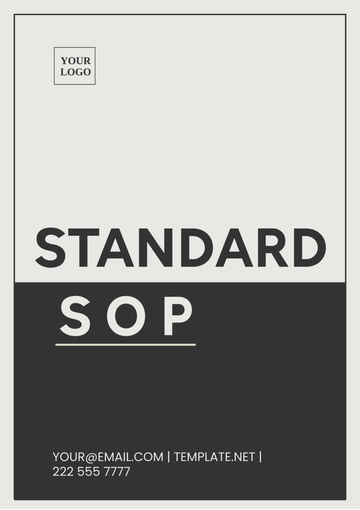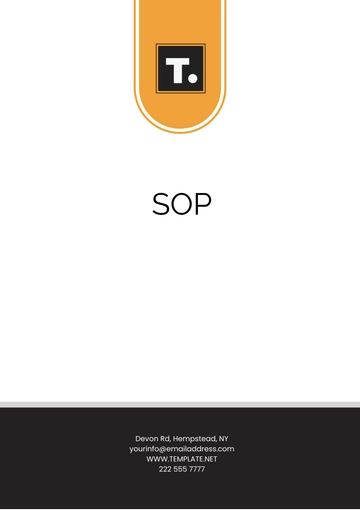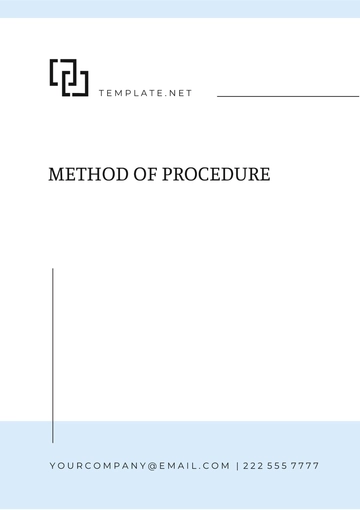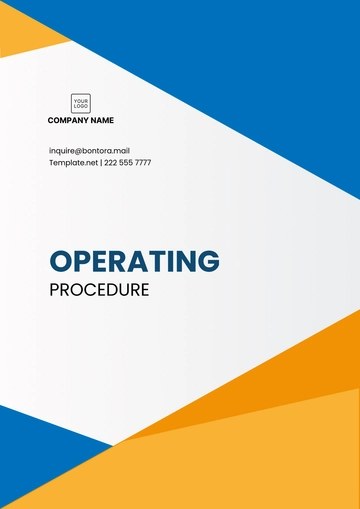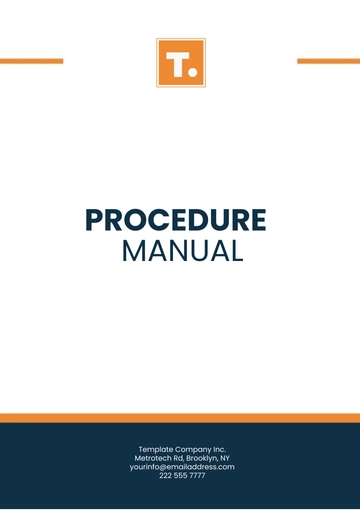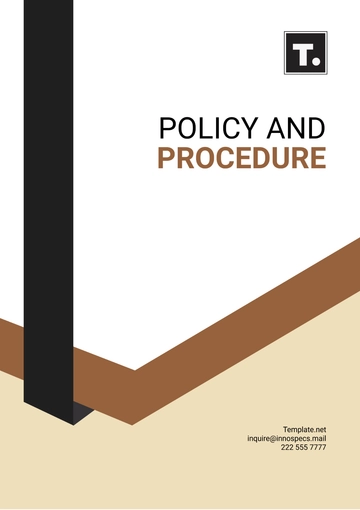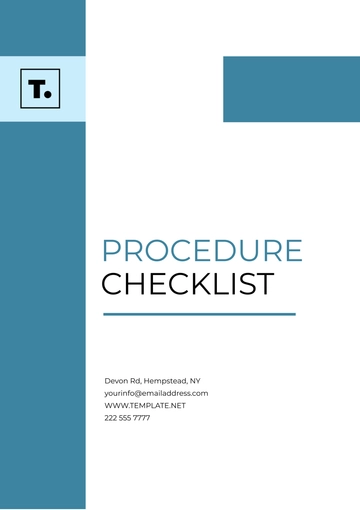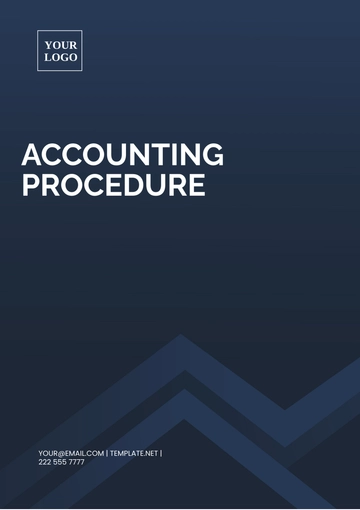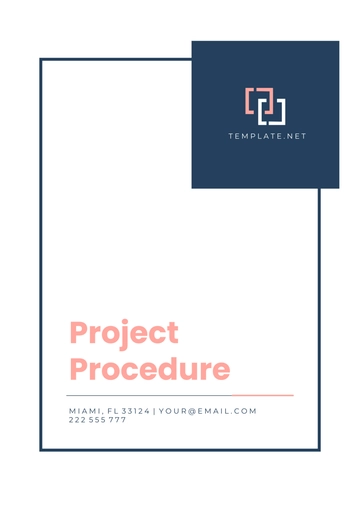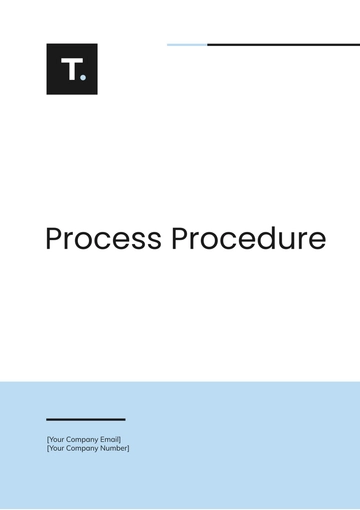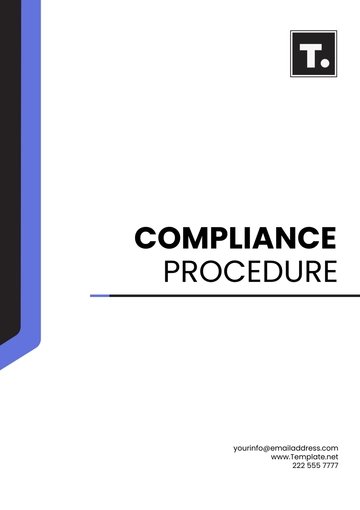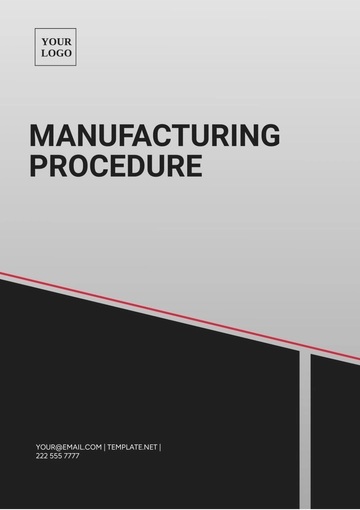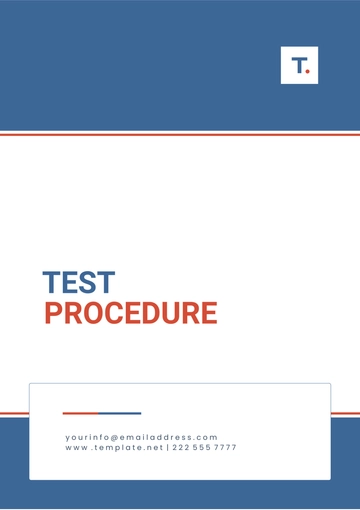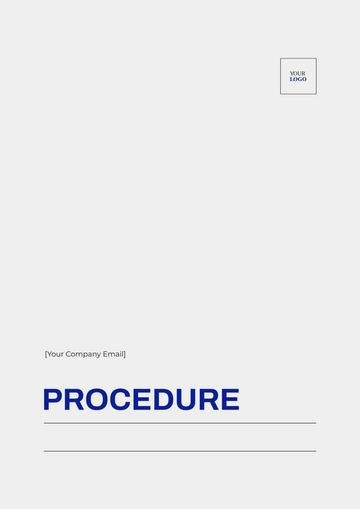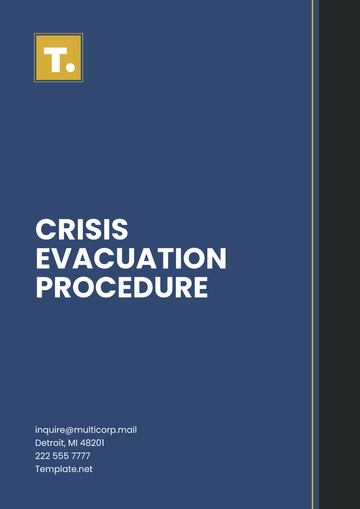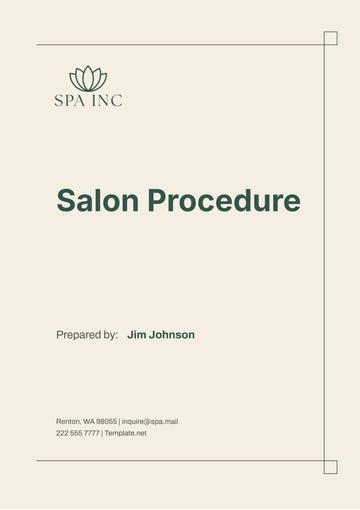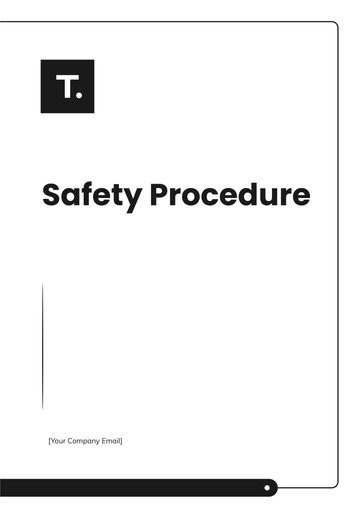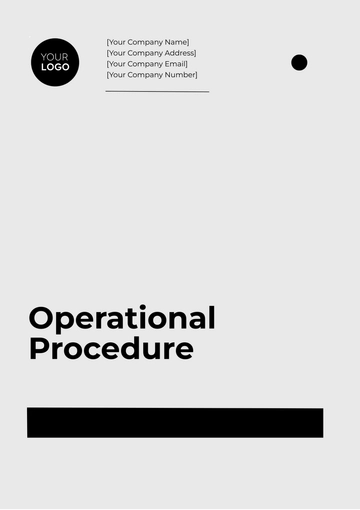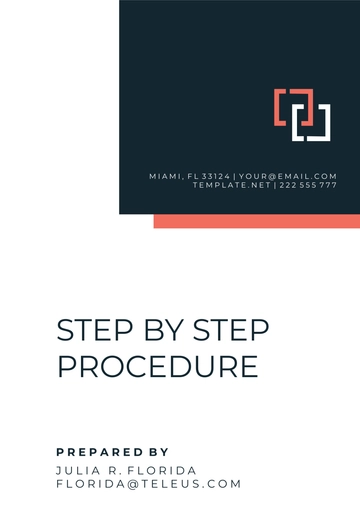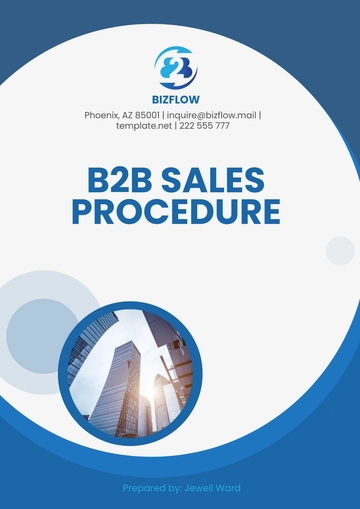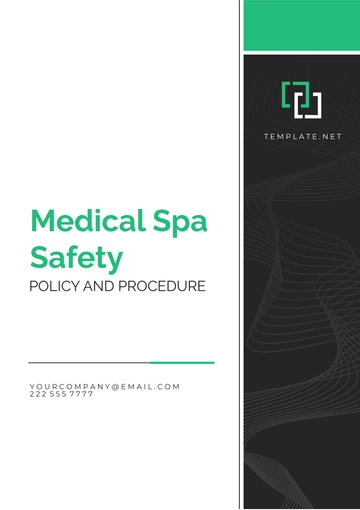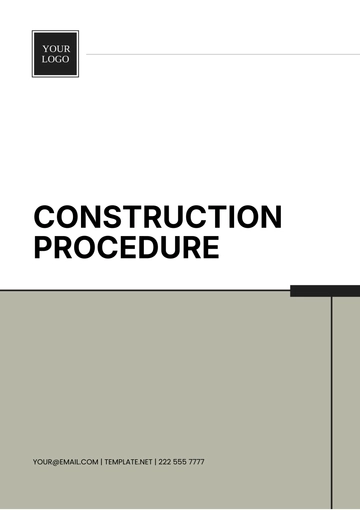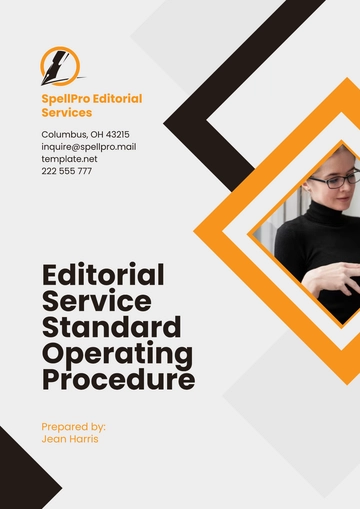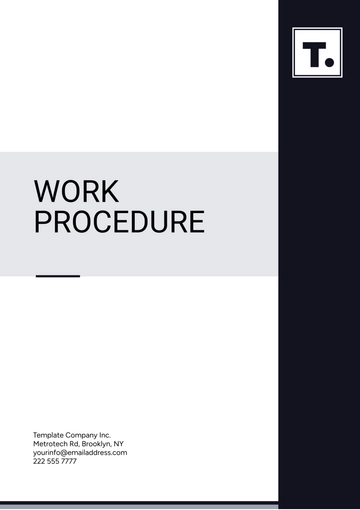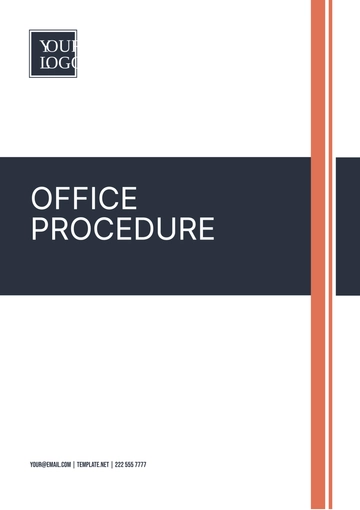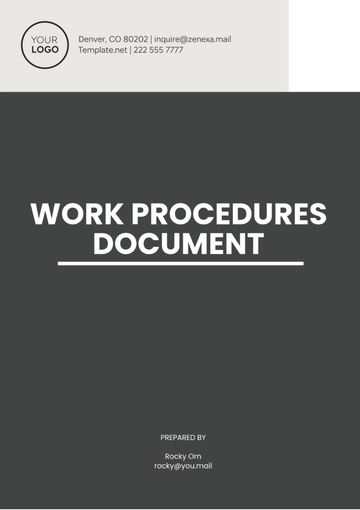Free Car Rental Company Procedure
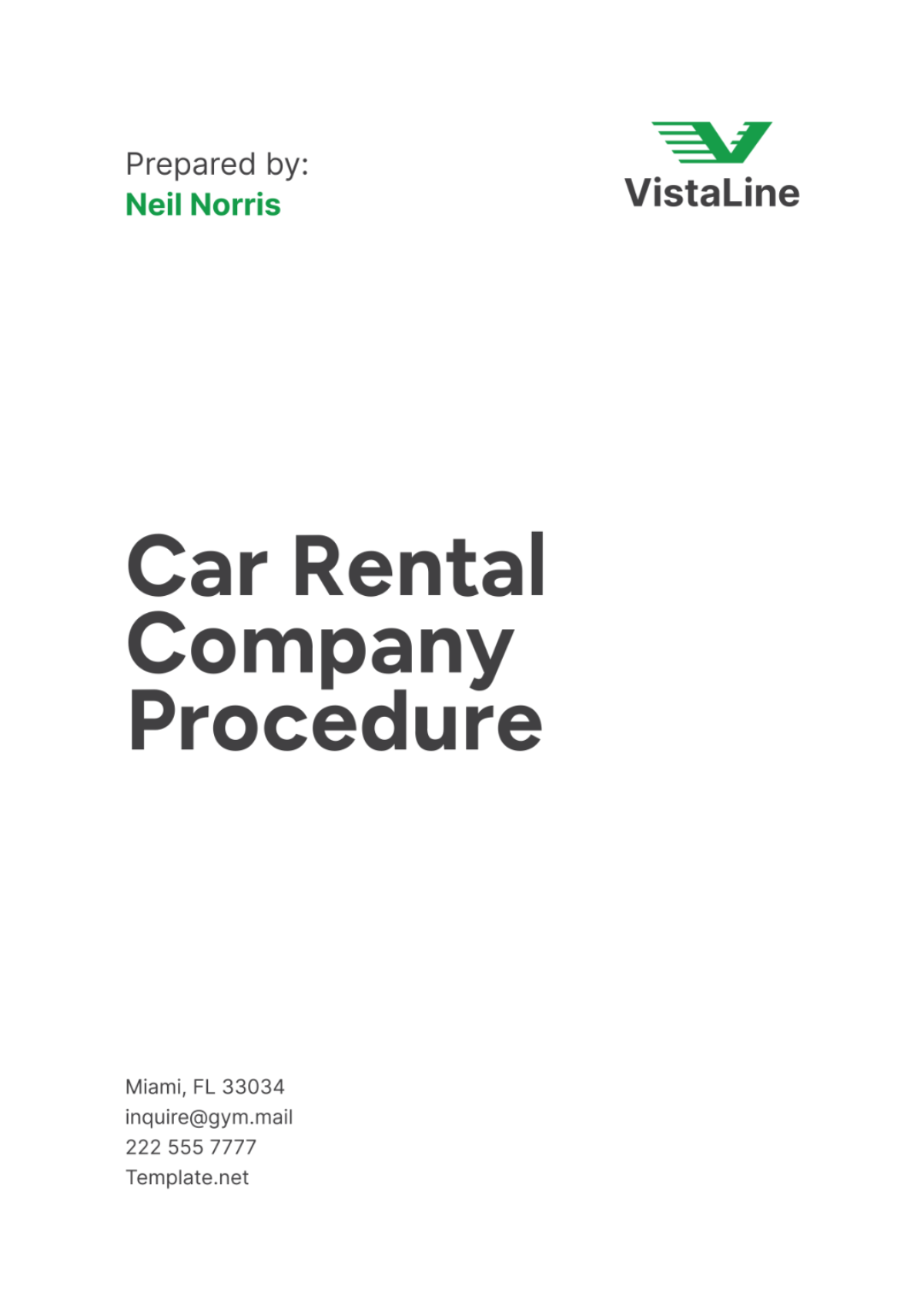
1. Introduction
Welcome to the Car Rental Company Procedure for [Your Company Name]. This document provides detailed and comprehensive procedures essential for the efficient operation of our car rental services. These procedures ensure consistency, reliability, and a high level of customer service.
2. Car Rental Reservation Process
The car rental reservation process is the first interaction a customer has with our company, making it crucial to handle inquiries efficiently and professionally. This ensures a positive initial impression and sets the tone for a smooth rental experience. Here, we outline the detailed steps involved in managing inquiries, entering reservations, and following up with customers to confirm their bookings.
2.1 Inquiry Handling
Handling inquiries efficiently is key to securing bookings and establishing trust with potential customers. When a customer contacts us, whether by phone, email, or through our website, the following information must be collected:
Customer’s name and contact details.
Desired rental dates and vehicle type.
Any specific requirements or preferences, such as child seats or GPS units.
Responding to inquiries involves several critical steps:
Check Vehicle Availability: Use our reservation management software to verify if the requested vehicle is available for the specified dates. If the requested vehicle is not available, offer alternative options that meet the customer's needs.
Provide Information: Clearly communicate the details of available vehicles, including features, rates, and rental terms. Transparency in these details helps build trust and avoids misunderstandings.
Offer Promotions: Inform the customer of any ongoing promotions or discounts that could be applicable. This can be a deciding factor for many customers.
Follow Up: After providing the necessary information, send a follow-up email or make a call to confirm the details discussed. This shows the customer that their inquiry is important to us and helps in finalizing the booking.
2.2 Reservation Entry
Entering reservations accurately into our system ensures smooth operations and avoids potential issues. The steps to enter a reservation are as follows:
Access the Reservation Management Software: Log in to our reservation system to start the booking process.
Input Customer Details: Enter all the collected customer information, including contact details and specific rental requirements. Accuracy at this stage is critical to avoid issues later.
Assign a Unique Reservation Number: Each reservation should have a unique identifier to track and manage the booking easily.
Confirm Vehicle Availability: Double-check the availability of the selected vehicle to ensure it has not been booked in the interim.
Send Confirmation Email: Send a detailed confirmation email to the customer, including reservation details, pickup instructions, and any other pertinent information.
2.3 Confirmation and Follow-Up
To ensure a seamless rental experience, follow these steps to confirm and follow up on reservations:
Send Confirmation: Immediately after entering the reservation, send a confirmation email or text message to the customer. This communication should include all necessary details about the rental, such as dates, vehicle type, pickup location, and any required documents.
Verify Details: Approximately 24 hours before the rental date, verify all customer details. This includes checking contact information, ensuring all required documents will be available, and confirming the rental pickup time.
Provide Additional Instructions: Include any additional instructions that the customer might need, such as directions to the pickup location, parking information, or any special procedures they need to follow.
3. Vehicle Pickup and Return Procedures
Proper handling of vehicle pickup and return is vital for customer satisfaction and vehicle maintenance. These procedures ensure that customers receive their vehicles in good condition and return them without hassle.
3.1 Vehicle Pickup
The vehicle pickup process is a critical point of customer interaction. It involves several steps to ensure the customer is fully informed and comfortable with the vehicle they are renting:
Greeting and Verification: Greet the customer warmly and verify their identity and reservation details. Ensure the customer presents a valid driver’s license and any other required documents.
Vehicle Inspection: Conduct a thorough inspection of the vehicle with the customer present. Note any pre-existing damage on a vehicle condition report and have the customer acknowledge these notes. This step is crucial to prevent disputes upon return.
Provide Rental Agreement: Give the customer a copy of the rental agreement and explain the terms and conditions. Ensure they understand the rental period, mileage limits, fuel policy, and any additional charges that may apply.
Review Vehicle Features: Briefly review the vehicle’s features with the customer. This includes basic operations such as how to start the car, use the headlights, operate the GPS, and any other relevant features.
Emergency Contact Information: Provide the customer with emergency contact numbers and instructions on what to do in case of a breakdown or accident.
Sign Documents: Ensure the customer signs all necessary documents, including the rental agreement and the vehicle condition report.
3.2 Vehicle Return
When the vehicle is returned, follow these steps to ensure a smooth process:
Thorough Inspection: Conduct a thorough inspection of the returned vehicle in the presence of the customer. Check for any new damage or excessive wear and tear and compare it with the initial condition report.
Record Mileage and Fuel Level: Note the vehicle’s mileage and fuel level at the time of return. Ensure it matches the agreed terms in the rental agreement.
Finalize Rental Agreement: Finalize the rental agreement by confirming all charges. Obtain the customer’s signature to acknowledge the return condition and final charges.
Provide Final Receipt: Provide the customer with a final receipt, detailing all charges and confirming the return of the vehicle.
3.3 Post-Return Inspection
After the customer leaves, perform a detailed post-return inspection to prepare the vehicle for the next rental:
Document Any Damages: Document any damages or issues found during the post-return inspection. Use detailed descriptions and photos if necessary.
Schedule Repairs: If any damage is found, schedule necessary repairs or maintenance promptly to ensure the vehicle is ready for the next rental.
Update Reservation System: Update the vehicle’s status in the reservation system to reflect its current condition and availability.
Notify Customer of Additional Charges: If there are any additional charges due to damages or excessive wear and tear, notify the customer promptly and provide a detailed explanation.
4. Payment and Billing Procedures
Accurate payment and billing procedures are essential for financial transparency and customer trust. Ensuring clarity and accuracy in all financial transactions is a top priority.
4.1 Payment Collection
Collecting payments efficiently ensures smooth financial operations. Follow these steps:
Acceptable Payment Methods: Accept various payment methods including credit/debit cards, cash, and online payments. Ensure that all payment methods are secure and reliable.
Pre-Authorize Credit/Debit Cards: At the time of reservation, pre-authorize the customer’s credit or debit card to ensure that sufficient funds are available. This helps avoid issues during pickup.
Collect Full Rental Amount: Collect the full rental amount at the time of vehicle pickup. This includes the rental fee, any insurance coverage chosen, and a security deposit if applicable.
Provide Detailed Receipt: Provide the customer with a detailed receipt outlining all charges. This includes rental fees, taxes, insurance, and any additional fees for optional services.
4.2 Billing Procedures
The billing process should be transparent and efficient. Follow these steps:
Generate Invoice: Generate an invoice at the end of the rental period. The invoice should include all charges: rental fees, taxes, insurance, and any additional fees such as late return charges or damages.
Send Invoice Promptly: Send the invoice to the customer via email promptly. Ensure the invoice is clear and detailed, breaking down all charges for transparency.
Handle Billing Disputes: Address any billing disputes professionally. Listen to the customer’s concerns, review the rental agreement and charges, and resolve the issue quickly. Provide a revised invoice if necessary.
4.3 Refunds and Adjustments
Manage refunds and adjustments with care to maintain customer trust:
Review Rental Agreement and Claims: Thoroughly review the rental agreement and any customer claims regarding overcharges or issues with the rental.
Approve Valid Refunds: Approve refunds for valid claims. Ensure that all refunds are processed in compliance with company policies and procedures.
Process Refunds Promptly: Process refunds within 7-10 business days. Inform the customer about the status of their refund and provide a confirmation once it is processed.
Provide Detailed Explanation: When issuing refunds or adjustments, provide the customer with a detailed explanation. This helps in maintaining transparency and trust.
5. Maintenance and Cleaning Procedures
Maintaining the quality and cleanliness of our vehicles is crucial for customer satisfaction and vehicle longevity.
5.1 Routine Maintenance
Routine maintenance includes:
Regular oil changes, tire rotations, and brake inspections.
Scheduled maintenance checks every 5,000 miles or as recommended by the manufacturer.
Keeping detailed records of all maintenance performed to ensure vehicle reliability.
5.2 Cleaning Procedures
Cleaning procedures involve:
Thoroughly cleaning the interior and exterior of the vehicle after each rental.
Disinfecting high-touch areas such as the steering wheel, door handles, and controls.
Checking and refilling all fluids, including windshield washer fluid and coolant.
5.3 Damage Repairs
Manage damage repairs by:
Assessing the extent of any damage found during inspections.
Scheduling repairs with approved service providers.
Updating the vehicle’s maintenance record upon completion of repairs to ensure it is ready for the next rental.
6. Customer Service Protocols
High-quality customer service is essential for maintaining a positive reputation and ensuring repeat business.
6.1 Customer Interaction
Ensure all customer interactions are:
Friendly, professional, and respectful.
Attentive to the customer’s needs and concerns.
Prompt in responding to inquiries, providing accurate and helpful information.
6.2 Handling Complaints
Effectively handle customer complaints by:
Listening to the customer’s issue without interruption.
Apologizing for any inconvenience caused.
Offering solutions and resolving the issue promptly.
Following up with the customer to ensure their satisfaction and prevent future issues.
6.3 Customer Feedback
Collect and utilize customer feedback through:
Post-rental surveys to gather insights on their experience.
Direct feedback during vehicle return, encouraging customers to share their thoughts.
Monitoring online reviews and ratings to address any negative feedback and improve services.
7. Safety and Emergency Procedures
Ensuring the safety of our customers and staff is a top priority.
7.1 Safety Protocols
Implement safety protocols by:
Conducting regular safety checks on all vehicles, including brakes, tires, and lights.
Providing customers with emergency contact numbers and instructions.
Ensuring all vehicles are equipped with a first-aid kit and emergency supplies.
7.2 Emergency Situations
In case of an emergency:
Prioritize the safety of the customer and any passengers.
Contact emergency services if needed.
Provide roadside assistance and support to the customer.
Document the incident and follow up with necessary actions, including repairs and customer compensation if applicable.
8. Compliance and Legal Requirements
Adhering to legal and regulatory requirements is crucial for protecting the company and its customers.
8.1 Licensing and Registration
Ensure all vehicles and operations are compliant by:
Keeping all vehicles properly registered and insured.
Maintaining copies of all relevant documents in a secure location.
Renewing licenses and registrations on time to avoid any legal issues.
8.2 Data Privacy
Protect customer data by:
Safeguarding personal information with secure systems and practices.
Complying with data protection laws and regulations.
Ensuring that all customer data is stored and processed securely to prevent unauthorized access.
8.3 Insurance and Liability
Manage insurance and liability procedures by:
Providing comprehensive insurance coverage for all vehicles.
Informing customers about available insurance options and coverage details.
Handling insurance claims promptly and efficiently, keeping customers informed throughout the process.
9. Reporting and Documentation
Maintaining accurate records and reporting is essential for operational transparency and accountability.
9.1 Daily Reports
Prepare daily reports that include:
Vehicle availability and status, ensuring accurate tracking of the fleet.
Rental transactions and payments, verifying all financial transactions are recorded.
Maintenance and cleaning activities, ensuring all tasks are completed and documented.
9.2 Monthly Reports
Generate monthly reports covering:
Financial performance and profitability, analyzing revenue and expenses.
Customer feedback and satisfaction levels, identifying areas for improvement.
Vehicle utilization and maintenance logs, ensuring optimal use and upkeep of the fleet.
9.3 Annual Reports
Compile annual reports that provide:
Comprehensive financial statements, including profit and loss, balance sheets, and cash flow statements.
Strategic performance reviews, assessing overall business performance and setting future goals.
Long-term maintenance and fleet management plans, ensuring the continued reliability and efficiency of the vehicle fleet.
10. Conclusion
By adhering to these comprehensive procedures, [Your Company Name] ensures that its car rental services are delivered with efficiency, reliability, and a focus on customer satisfaction. Consistent application of these procedures helps maintain high operational standards, fostering trust and loyalty from our valued customers.
For any questions or further information, please contact:
[Your Name]
[Your Email]
[Your Company Name]
[Your Company Email]
[Your Company Number]
- 100% Customizable, free editor
- Access 1 Million+ Templates, photo’s & graphics
- Download or share as a template
- Click and replace photos, graphics, text, backgrounds
- Resize, crop, AI write & more
- Access advanced editor
Explore the streamlined efficiency of our Car Rental Company Procedure Template at Template.net. This template ensures that your operations are thoroughly organized, highlighting best practices and procedural consistency. Fully editable and customizable with our AI editor tool, it is designed to fit the specific needs of your car rental business, enhancing your operational workflow.
